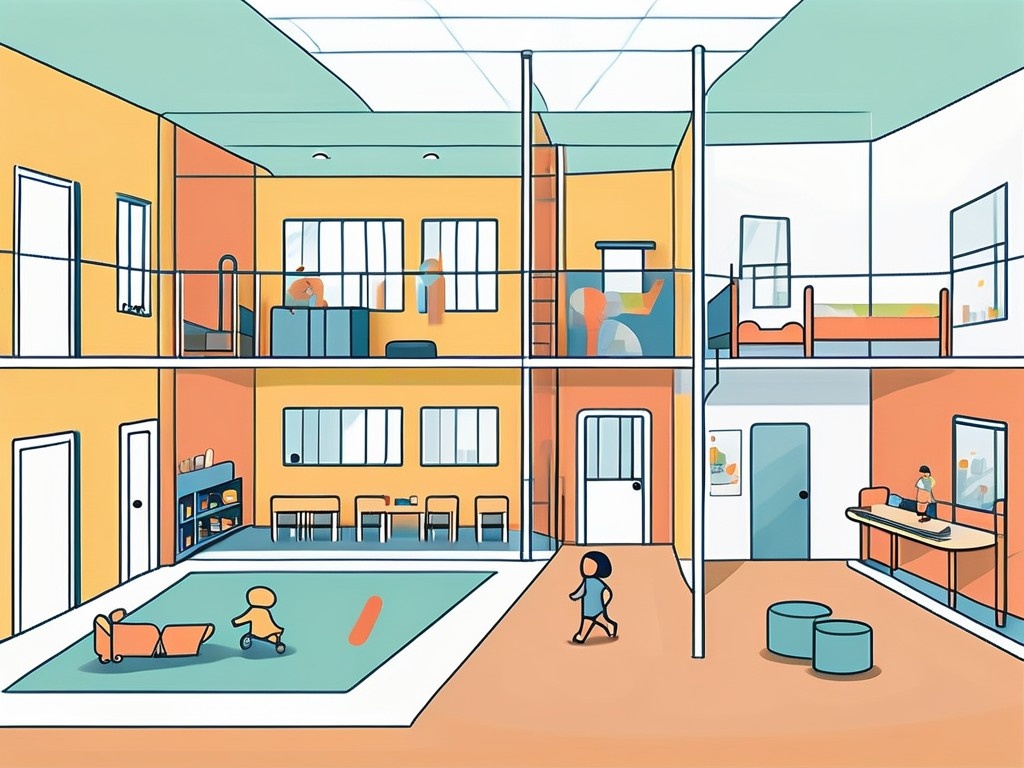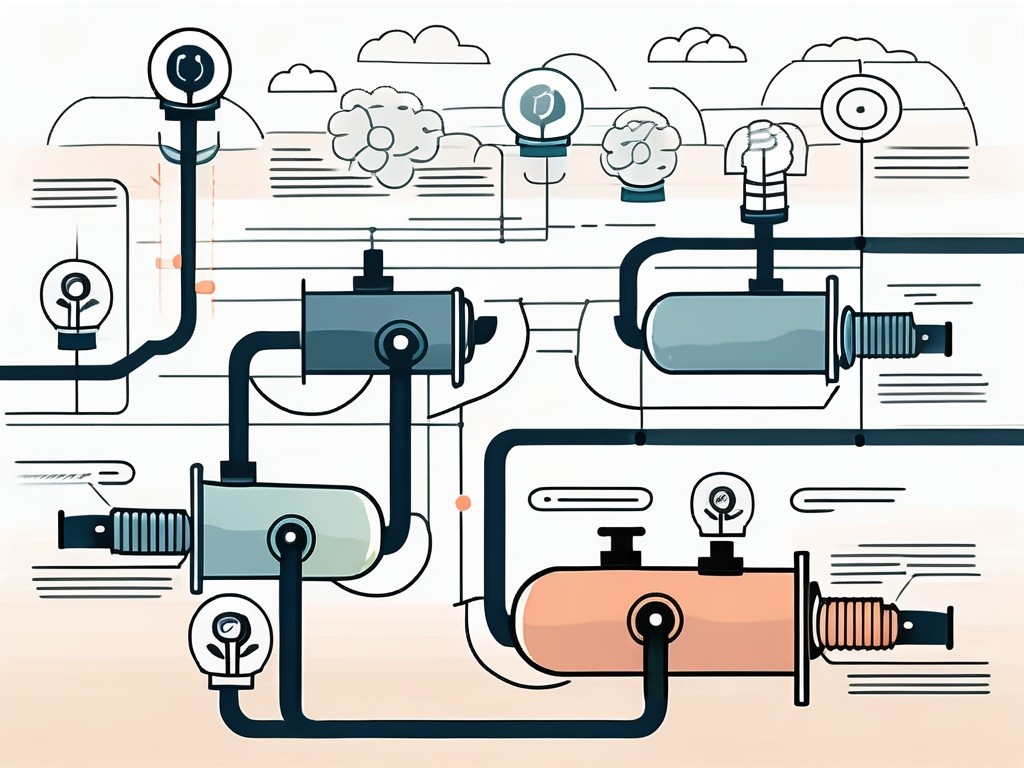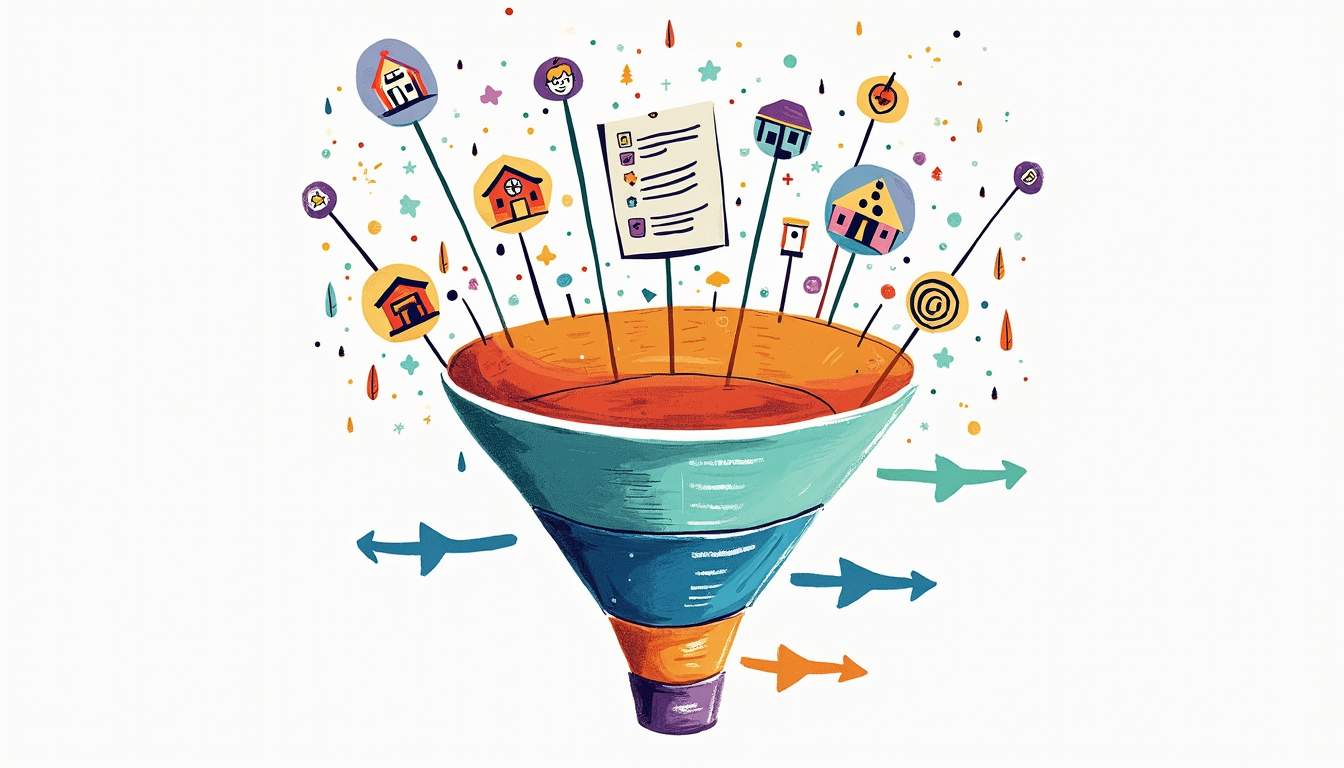In today’s fast-paced world, managing a childcare center can be a challenging task. With numerous responsibilities ranging from enrollment and scheduling to communication with parents and staff, it’s crucial to have efficient systems in place. This is where Customer Relationship Management (CRM) pipelines come into play. In this article, we’ll explore the importance of CRM in childcare center management and discuss best practices for building and optimizing these pipelines.
Understanding CRM Pipelines in Childcare Management
Childcare centers are unique organizations that require effective management strategies. A CRM pipeline serves as a robust tool for streamlining processes and ensuring smooth operations. By implementing a well-designed CRM pipeline, childcare centers can enhance communication with parents, facilitate enrollment procedures, track progress, and monitor key performance indicators (KPIs).
The Role of CRM in Childcare Center Management
In childcare center management, CRM plays a vital role in nurturing relationships with parents and ensuring their satisfaction. It enables centers to keep track of relevant information, such as children’s preferences, dietary requirements, and medical history. By leveraging this information effectively, centers can provide personalized care, address concerns promptly, and maintain open lines of communication.
For example, imagine a childcare center that uses a CRM pipeline to manage its operations. When a new child is enrolled, the CRM system captures important details about the child, such as their favorite activities, allergies, and any specific needs they may have. This information is then readily available to the center’s staff, allowing them to provide tailored care and create a nurturing environment for the child.
Furthermore, the CRM pipeline enables childcare centers to maintain a comprehensive record of parent interactions. This includes communication history, feedback received, and any issues that may have arisen. With this information at their fingertips, center administrators can proactively address concerns, demonstrate responsiveness, and build trust with parents.
Key Features of a Childcare CRM Pipeline
A well-designed CRM pipeline should encompass several key features to maximize its effectiveness. These include:
- Enrollment Management: The ability to track and manage the enrollment process efficiently. This feature allows childcare centers to easily monitor the number of available spots, manage waitlists, and streamline the enrollment paperwork.
- Parent Communication: Tools for seamless communication, such as email templates and messaging functionalities. With these tools, centers can send regular updates to parents, share important announcements, and address any concerns or questions promptly.
- Scheduling and Attendance: Automated systems for scheduling and tracking attendance, simplifying administrative tasks. This feature allows centers to create schedules for staff and children, monitor attendance, and generate reports to ensure optimal staffing levels.
- Reporting and Analytics: Comprehensive reporting capabilities to track KPIs, measure performance, and identify areas for improvement. By analyzing data on enrollment rates, parent satisfaction, and staff productivity, childcare centers can make data-driven decisions and continuously enhance their operations.
By incorporating these key features into their CRM pipeline, childcare centers can streamline their management processes, improve parent satisfaction, and create a nurturing environment for children. The CRM pipeline becomes an invaluable tool that empowers centers to deliver high-quality care and build strong relationships with parents.
Schedule a FREE 30 minutes Session with Us!
Building an Effective CRM Pipeline for Your Childcare Center
Steps to Create a CRM Pipeline
Building an effective CRM pipeline requires careful planning and execution. Here are the essential steps:

1. Set Clear Goals: Define your objectives and determine how a CRM pipeline can help you achieve them.
2. Identify and Gather Data: Collect relevant information about your childcare center and the families you serve.
3. Select the Right CRM Software: Choose a CRM software that aligns with your center’s needs and budget.
4. Customize and Configure: Tailor the CRM software to suit your specific requirements by adding custom fields and setting up workflows.
5. Train and Educate Staff: Provide comprehensive training to your staff on how to use the CRM pipeline effectively.
6. Monitor and Adjust: Continuously monitor the pipeline’s performance and make necessary adjustments as needed.
Essential Components of a Successful CRM Pipeline
A successful CRM pipeline incorporates various components that work together cohesively. These include:
- Lead Generation: Strategies for attracting prospective families and converting them into enrolled children.
- Lead Management: Processes for tracking and nurturing leads throughout the enrollment journey.
- Parent Engagement: Tools to enhance parent engagement through regular updates, newsletters, and feedback mechanisms.
- Automated Workflows: Streamlined workflows to automate repetitive tasks and improve efficiency.
Now that we have covered the essential steps and components of building an effective CRM pipeline for your childcare center, let’s delve deeper into each one to provide you with a more comprehensive understanding.
Setting clear goals is crucial in any business endeavor, and building a CRM pipeline is no exception. By defining your objectives, you can align your efforts and resources towards achieving them. Whether your goal is to increase enrollment, improve parent satisfaction, or streamline administrative processes, a CRM pipeline can help you track progress and measure success.
Once you have established your goals, the next step is to identify and gather relevant data. This includes information about your childcare center, such as the number of enrolled children, staff members, and available resources. Additionally, collecting data about the families you serve, such as their preferences, interests, and contact details, can help you personalize your communication and provide a better experience.
Choosing the right CRM software is essential for the success of your pipeline. Consider factors such as ease of use, scalability, and integration capabilities when selecting a CRM solution. It should align with your center’s needs and budget, allowing you to efficiently manage leads, track interactions, and automate tasks.
Customizing and configuring your CRM software is crucial to ensure it meets your specific requirements. By adding custom fields and setting up workflows, you can tailor the system to match your center’s unique processes. This customization allows for better organization, improved data management, and increased efficiency.
Training and educating your staff on how to effectively use the CRM pipeline is vital for its successful implementation. Provide comprehensive training sessions that cover the system’s features, functionalities, and best practices. This will empower your staff to utilize the CRM software to its full potential, resulting in improved productivity and better customer service.
Monitoring and adjusting your CRM pipeline is an ongoing process. Regularly evaluate its performance and make necessary adjustments to optimize its effectiveness. This includes analyzing data, identifying bottlenecks, and implementing improvements. By continuously monitoring and adjusting your CRM pipeline, you can ensure its alignment with your center’s evolving needs and goals.
Now that we have explored the essential steps, let’s dive into the key components that make up a successful CRM pipeline for your childcare center.
Lead generation is a critical component of a successful CRM pipeline. It involves implementing strategies to attract prospective families to your childcare center and converting them into enrolled children. This can be achieved through various marketing channels, such as online advertising, social media campaigns, and community outreach programs.
Lead management is another crucial aspect of a CRM pipeline. It involves tracking and nurturing leads throughout their enrollment journey. By implementing effective lead management processes, you can ensure that no potential families fall through the cracks. This includes timely follow-ups, personalized communication, and providing relevant information to address their needs and concerns.
Parent engagement plays a vital role in building strong relationships with the families you serve. By utilizing tools such as regular updates, newsletters, and feedback mechanisms, you can keep parents informed and involved in their child’s development. This fosters a sense of trust and partnership, leading to increased satisfaction and loyalty.
Automated workflows are a game-changer when it comes to improving efficiency and productivity. By streamlining repetitive tasks, such as sending reminders, scheduling appointments, and generating reports, you can free up valuable time for your staff to focus on more meaningful interactions with families. This automation not only saves time but also reduces the risk of errors and ensures consistency in your processes.
By understanding and implementing these essential steps and components, you can build an effective CRM pipeline for your childcare center. Remember, it is a continuous process that requires dedication, monitoring, and adaptation. With the right strategy and tools in place, you can enhance your center’s operations, improve parent satisfaction, and ultimately achieve your goals.
Schedule a FREE 30 minutes Session with Us!
Optimizing Your CRM Pipeline for Better Management
Strategies for CRM Pipeline Optimization
To optimize your CRM pipeline effectively, consider the following strategies:

- Data Cleanup: Regularly review and update data to ensure accuracy and relevance.
- Automation: Leverage automation features to streamline processes and reduce manual effort.
- Integration: Integrate your CRM pipeline with other essential tools and systems to enhance productivity.
- Continuous Training: Regularly educate your staff on new features and best practices to maximize the system’s potential.
Overcoming Common CRM Pipeline Challenges
Implementing a CRM pipeline can come with its fair share of challenges. Some commonly encountered hurdles include resistance to change, data security concerns, and user adoption. To overcome these challenges, ensure proper training, address concerns proactively, and emphasize the benefits of the CRM pipeline to all stakeholders involved.
Measuring the Success of Your CRM Pipeline
Key Performance Indicators for CRM Pipelines
Measuring the success of your CRM pipeline is crucial to understand its impact and identify areas for improvement. Key performance indicators to consider include:
- Conversion Rate: The percentage of leads that successfully convert into enrolled children.
- Customer Satisfaction: Feedback from parents and staff to gauge satisfaction levels.
- Enrollment Retention: The ability to retain enrolled children and maintain a low churn rate.
- Response Time: The average time taken to respond to parent inquiries or requests.
Continuous Improvement of Your CRM Pipeline
A CRM pipeline is not a one-time implementation but an ongoing process. Continuously evaluate its performance, gather feedback, and make necessary improvements. Regularly update the pipeline to align with the evolving needs and expectations of your childcare center and its stakeholders.
Future Trends in CRM for Childcare Management
Technological Advancements in CRM
The field of CRM continues to evolve, and childcare management can benefit from emerging technological advancements. Some notable trends include:

- Artificial Intelligence: Utilizing AI-powered chatbots for enhanced parent communication and personalized experiences.
- Data Analytics: Leveraging advanced analytics to gain valuable insights from data and make data-driven decisions.
- Mobile Applications: Developing mobile applications to facilitate seamless communication and enhance parental engagement.
The Impact of CRM Trends on Childcare Management
Embracing these CRM trends can significantly impact childcare management by improving efficiency, enhancing parent satisfaction, and streamlining operations. Keeping up with these trends ensures that your childcare center stays competitive and meets the evolving needs of today’s parents.
In conclusion, an effective CRM pipeline is crucial for successful childcare center management. By understanding the role of CRM, implementing best practices, and optimizing the pipeline, childcare centers can enhance communication, streamline processes, and ultimately provide better care for the children they serve.







Share